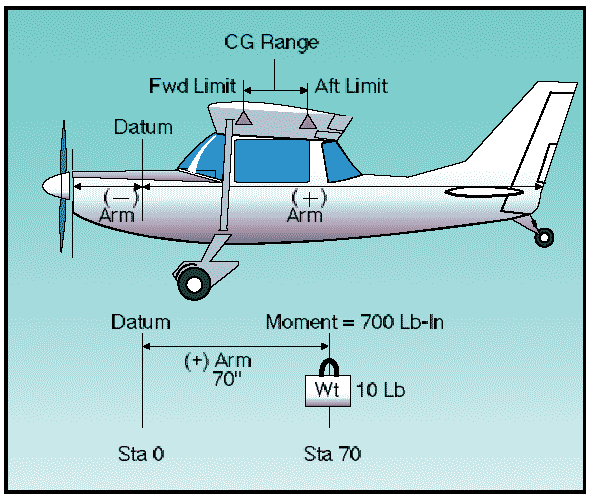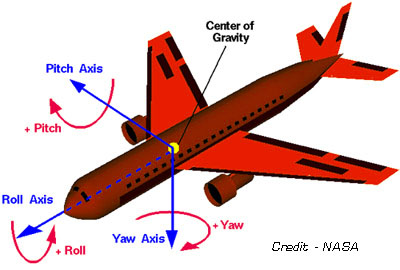AIRCRAFT WEIGHT AND BALANCE

Weight and balance illustrated.
An Important Safety Consideration for Pilots.
Aircraft Performance and Handling Characteristics are affected by the gross
weight and center of gravity limits. If every pilot, dispatchers and operators were
to understand and respect this fact, general aviation accidents could be
reduced dramatically.
An overloaded or improperly balanced aircraft
will require more power and greater fuel consumption to maintain flight, and
the stability and controllability will be seriously affected.
Weight and Balance suggests the concern is not
only with the weight of the airplane but also the location of its center of
gravity (CG). The importance of the CG should have become apparent in the
discussion of stability, controllability, and performance.
If all pilots,
dispatchers understood and respected the effect of CG on an airplane, then one type
of accident would be eliminated from the records: PRIMARY CAUSE OF ACCIDENT
AIRPLANE CENTER OF GRAVITY OUT OF REARWARD LIMITS AND UNEQUAL LOAD DISTRIBUTION
RESULTING IN AN UNSTABLE AIRPLANE. PILOT LOST CONTROL OF AIRPLANE ON TAKE OFF
AND CRASHED.
The distribution of the overall load within the
aircraft – important for monitoring the maximum permissible masses – and the
aircraft’s center of gravity – the trim – are included.
The trim must also remain within a prescribed
tolerance during takeoff, the entire flight, and landing.
When preparing the loading plan, it is
necessary not only to consider the positions, weights, and sizes of cargo units
but especially also whether the IATA rules permit them to be stowed adjacent to
one another in the aircraft.
Axis of Rotation
The Weight and Balance issue is particularly
important for Cargo Operations.
Two fatal cargo plane crashes occurred in the
United States in recent years because of a failure to load the airplane within
weight and/or center of gravity (CG) limits.
The first crash involved the Aug. 7, 1997 fiery
impact moments after takeoff of a Fine Air DC-8 cargo jet at Miami. The second crash,
involved the Feb. 16, 2000 crash seconds after takeoff from LA California this time of an improperly loaded Evergreen Worldwide Airlines DC-8.
My best recommendation to all folks working in
the aviation industry always must be alerted, we are humans nothing is perfect; remember before
each flight the pilot and dispatchers must ensure that the aircraft does not
exceed the maximum gross weight. Constantly
must also determine the Center of Gravity (C of G) of an aircraft before each
flight to ensure it is between the maximum rearward and maximum forward
positions (the C of G Range). Check and Re Check always all the time before
your flight.
Human Errors always going to be, the most
important is to detected on time to prevent accidents.
Maintain knowledge and understand that aircraft
performance and handling characteristics are affected by the gross weight and
center of gravity. This could dramatically reduce aviation accidents.
Any airplane must be carefully loaded to
maintain the center of gravity within a carefully designed and tested zone of
the airplane
Think Safety Work Safety !!!!

Excellent advice! Always be alter! We can always learn from accidents and hopefully never repeat.
ReplyDeleteVery important information as it is in line with my current job as a loadmaster
ReplyDelete